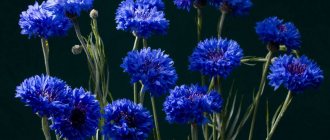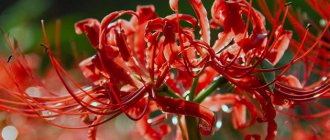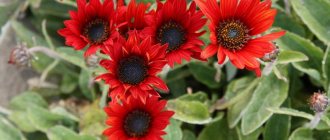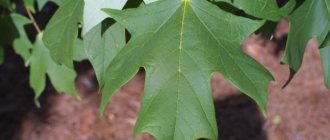Many summer residents are wondering what ornamental bush to plant on their site. I want the plant to be beautiful, frost-resistant and pleasing to the eye at any time of the year. An excellent solution could be white snowberry - a shrub known to many since childhood for its inedible, but loudly clapping white berries. When planting snowberry, it is worth remembering that it is a wolfberry - even one piece can cause severe poisoning. Nevertheless, this is an unpretentious plant that, with proper care, will decorate the garden for many years. Photos and description of the bush in our article.
Botanical description of the plant
The most common variety in Russia is the white snowberry (Symphoricarpos albus). Shrubs belong to the honeysuckle family, class of dicotyledons, division of angiosperms.
The snowberry comes from North America. In addition to excellent decorative properties, snowberries are excellent honey plants and produce a lot of nectar. In the wild it propagates by seeds and root suckers, in a cultivated environment by cuttings and bush offshoots.
What does a bush look like?
Snowberry is a frost-resistant deciduous shrub with a rounded crown, which, on average, reaches a height of 150 cm and branches abundantly with thin shoots. The branches are flexible and hold their shape well even under heavy snow cover.
Foliage
The shape of the leaves ranges from ovoid to oval, from 2 to 5 cm long. The upper side of the leaf is rich green and smooth, and the lower side is velvety, with a grayish tint.
Inflorescences
Carpal inflorescences are collected from bell-shaped corollas with 4-5 petals. The color ranges from dark pink to almost white. Snowberry blooms profusely and for quite a long time: from May to September, and flowering occurs parallel to the ripening of the fruits.
Description of berries
The spherical berries ripen in September. The fruits are dense, 0.5-1 cm in diameter, white, with two seeds inside, and stay on the bush for a long time. The berries of the white snowberry are inedible for humans, but in the autumn they become nutritious food for birds.
Medicinal properties
The chemical composition of snowberry has been little studied, so the plant is almost never used in folk medicine.
But in North America, where the shrub is found throughout the territory, indigenous people have learned to use it for healing. They know about the antimicrobial and disinfectant properties of white snowberry and prepare potions from its berries, bark and leaves to treat wounds.
Crushed leaves of the shrub are used to combat skin ulcers. Compresses made from crushed fruits are used in the treatment of burns and cracks on the skin surface. An infusion of the bark from the plant is good for sore throats, as well as many other diseases:
- tuberculosis;
- menstrual pain;
- venereal diseases;
- stomach pathologies;
- cold.
Despite these properties, it is not recommended to treat yourself with these poisonous drugs without consulting a specialist.
The original berries of the bush are beautiful in appearance, but unpleasant in taste. When poisoned by snowberry fruits, the following symptoms are observed:
- nausea and vomiting;
- paroxysmal pain in the stomach;
- burning in the mouth and throat;
- feeling weak and dizzy;
- stomach upset;
- lethargy.
If the toxic substances of the plant get on the skin and mucous membrane, swelling, redness and irritation of the skin occurs. The victim experiences pain, the intensity of which will depend on the affected area. The individual characteristics of the body also matter.
Read also: The benefits and harms of beets for the human body
When plant poison gets on the skin, it is recommended to immediately rinse the affected area with water. When ingested, symptomatic therapy is carried out. You need to drink milk, which has the property of neutralizing poison, or activated charcoal. If the condition is severe, then you should immediately seek medical help.
Types and varieties of snowberry
In addition to white snowberry, there are other varieties that feel great in summer cottages throughout Russia. Below are photos and descriptions of the most popular ones.
Common snowberry
A tall shrub with thin branches and small dark green foliage. The common snowberry looks advantageous in a garden group and stands out for its rich red berries.
Unlike its white counterpart, the common snowberry cannot boast of impeccable winter hardiness. This shrub prefers warm winters, so it will grow best in the southern regions of Russia.
Mountain-loving snowberry
The mountain-loving snowberry comes from the forests of North America, but also feels good in central Russia. Blooms profusely with pink flowers and bears fruit every year.
Western snowberry
An ideal option for hedges - it does not need a lot of light and thickens well.
Snowberry Dorenboza
Hybrid variety from the Netherlands. These snowberries are compact and have graphic, aesthetically pleasing outlines. The Dorenboza snowberry blooms with bright pink flowers.
Henault's snowberry
Deciduous shrub with red berries. It has excellent ground cover qualities and is well suited for creating arches.
Snowberry Shenot
Another hybrid snowberry, bred at the beginning of the twentieth century. A real giant among snowbirds. The shrub grows up to 3 m in height.
White snowberry berries
Thanks to its original white fruits, the shrub received its name. The small, round, waxy berries are soft to the touch and fit tightly together, forming beautiful and original clusters. It's not often you see branches with red berries, but the rarest is the inky purple color.
Read also Acrid buttercup: description and properties of a poisonous plant
In late autumn the berries are already fully ripened, but with the onset of frost the balls do not fall off. They hold well on flexible branches, descending to the ground. In winter, the fruits often serve as food for many birds. In autumn, they can be mistaken for lumps of snow that decorate graceful shrubs.
Very often, a bush with white berries that click attracts children. Kids play with balls, smashing them on the asphalt with their shoes. At the same time, the berries make a clicking sound, which delights the children.
Most people don't know whether snowberry is edible or not. In fact, the berries are unsuitable for human consumption because they are poisonous. If you eat them in small quantities, they will not cause terrible harm to your health. A large portion of fruits will lead to poisoning of the body. The fruits contain the toxic substance corned beef and another toxin that is still unknown to scientists.
Reproduction of snowberry
Shrubs are propagated in different ways, any of them is quite successful.
From seeds
Not the most convenient method of propagation in a cultural environment, but good for those who like to experiment. The seeds are separated from the berries, squeezed out and placed in a vessel with water. As soon as they settle to the bottom and the pulp floats to the surface, the material is ready for sowing.
Before winter, seeds are sown in containers with a nutrient substrate, evenly distributed over the surface, lightly sprinkled with sand. Crops need to be covered with glass and watered through a tray or with a spray bottle. Already in the spring, seedlings will appear, which, after picking at the end of the season, can be planted in open ground.
Root suckers
A simpler and more convenient way to propagate snowberries is by root shoots. The shrub grows widely over time and produces large clumps.
You should select the strongest root shoot, dig it up and plant it in a prepared place. This method allows you not only to obtain a strong seedling, but also to prevent thickening and displacement of the mother bush.
Dividing the bush
Another popular method of propagation is dividing the bush. The procedure is carried out in early spring or late autumn, during periods when sap flow in the plant stops.
An adult, densely grown plant is dug up and divided. The resulting parts are called divisions. It is necessary to treat the cut areas with charcoal and immediately plant the plants in the prepared permanent places.
Layerings
Snowberry also successfully reproduces by layering. To do this, in early March you need to find a healthy, young branch that grows close to the soil surface.
The selected layer is placed in a small hole, secured and sprinkled with earth so that the top remains on the surface.
Layering requires proper care. It is necessary to loosen the soil, water and feed throughout the season. In the fall, when the layer takes root, it should be separated from the main bush with pruning shears and planted in a permanent place.
Cuttings
In addition, experienced summer residents recommend propagating snowberry by cuttings. To do this, at the beginning of summer you need to prepare lignified branches 10-20 cm long with 4-5 buds.
The cuttings are stored in sand in a damp, cool place until spring. In spring, cuttings are rooted in soil mixture.
By autumn, the plant should have formed a strong root system, after which it can be planted in a permanent place.
Requirements for growing a plant
Since the tree is exotic, it is capricious to care for and grow. Self-propagation of a plant is a labor-intensive process, so the task will be difficult for an amateur gardener.
Germination of shrubs by seeds takes a long time; seedlings appear over several seasons. Preliminary stratification of seeds will help speed up the process.
The shrub also takes root by layering . The young shoot is dug into the ground, while the soil is moistened and mulched. Over the course of a year, the cutting forms roots, after which the future seedling is carefully separated from the mother tree.
Some gardeners try to root the plant using green cuttings, but this method is rarely successful.
Therefore, planting through seeds, as well as layering of shrubs, is more often used.
The American variety of the crop is more frost-resistant, but the maximum temperature during the cold period becomes -15 degrees. Shelter from frost is required for young plants and seedlings.
Gardeners graft the plant onto trees, but this also requires skill. Since the shrub is demanding and whimsical. Imported grafted plants grow in specialized nurseries, but it is important that such crops often cannot tolerate cold climates, even if a shelter is built.
For southern territories, hybrid varieties of shrubs are suitable for cultivation. Features of selecting seedlings for planting a tree. Like other varieties of plants, it is better to buy snowflower in a specialized nursery.
Young seedlings are difficult to root and grow on your own, so it is better to order plants from breeders.
But since foreign seedlings are often sold in nature reserves, it is better to select in advance plants purchased in countries with a similar climate. It is recommended to buy shrubs in special containers with a healthy root structure.
When purchasing, it is important that the cuttings are healthy in appearance (without damage to the trunk, branches, crown, rhizomes) and placed in nutritious soil. This ensures that the plant is alive and will take root on the site.
When purchasing seeds, you should pay attention to their healthy appearance and integrity; seeds from last year’s harvest are preferable. They are also ordered taking into account the climate in which the tree will grow.
Selecting a site for planting shrubs
In its natural habitat, snowflower prefers to be located on the slopes of hills, near rivers, where there is no strong wind, but there is sufficient lighting.
The snow tree grows quietly in conditions of sandy or rocky nutrient soil. In design projects, shrubs are planted in humus-enriched, loamy areas.
Neutral acidity, a slightly acidic substrate, will be preferred. For normal growth of a tree, it is important to have sufficient lighting, absence of winds, and moist, nutritious, drained soil.
At southern latitudes, the plant blooms earlier and longer; in temperate climates, the tree activates growth in May, and flowering begins in June. Since the plant needs watering, it is important to moisten the soil frequently and abundantly; hionanthus does not tolerate arid climates.
Provided the plant has a fertile, nutritious substrate, it is not necessary to fertilize it , but if the soil is depleted, periodic fertilizing with organic solutions is recommended.
For the bush to fully grow, loosening the soil after watering is required; there is no need to form and trim the crown, but it is recommended to do sanitary pruning after winter.
Germinating Chionanthus seeds
If the work is carried out correctly, the seeds of the plant will germinate both the next year and several years after planting. They are sown before the onset of winter, at which time the soil is watered and loosened.
An effective method of creating favorable conditions for seed germination is to plant in a container until the sprouts appear. To speed up germination, seed stratification is required, which includes some requirements.
The seeds are placed in damp sand, covered with sphagnum, then the container is placed in a room with a temperature of 20 degrees Celsius for 3 months.
After this, the container is placed for 3 months at a temperature of 4 degrees Celsius, then again at +20 for the same period. During this period, the seeds germinate, then the container is placed in the refrigerator for 3 months for the proper development of hionanthus. After this, the box with the sprouts is transferred to a warm climate, the soil is watered and loosened.
You can also plant the seeds in the soil, where when watered and loosened, the seeds will hatch on their own. But this method takes a long time.
Planting snowberries in open ground
When you decide to plant a snowberry on your site, you should find a lighted or slightly darkened place with moderately moist soil. The plant has a powerful root system, so it is suitable even for crumbling slopes and soils prone to erosion.
When planting in the fall, the soil is prepared a month in advance, and for spring planting the soil is prepared in the fall.
In order for the snowberry to take root, the soil at the planting site must settle well. For spot planting, you need to dig a hole 50x50 cm, 50-60 cm deep, pour out a layer of crushed stone, then a soil mixture (it is recommended to use mixtures containing peat, river sand and compost) and fertilizers. Shrubs should be placed at a distance of approximately 1.5 m.
For a hedge, you should dig a trench 60 cm deep and 40 cm wide. For optimal hedge density, 5 seedlings aged 2-4 years are planted per 1 m of trench.
The procedure for preparing the soil is the same as for spot planting. Before planting, the roots of the seedlings must be immersed in a clay solution for 30-40 minutes.
Soil compaction and shrinkage should be taken into account. As a result, the root collar of the seedling should be at ground level. In the first few days, the seedling needs abundant watering.
Features of cultivation
White snowflake is actively used in ornamental gardening. It wonderfully decorates the local area and park areas. The plant is unpretentious, but requires proper planting and some care. To grow a beautiful bush with high decorative qualities, you need to choose a well-lit place with calcareous soil for planting. It will also grow well in shade or partial shade, in a dry to moist location.
The shrub is distinguished by thick and powerful roots, which, after planting, can stop soil erosion, which is very important for slopes. It is recommended to plant wolfberries in spring or early autumn. For young seedlings, it is better to choose a site located in partial shade. They need watering to form roots. Mature shrubs can grow well in dry soil, since their root system independently receives moisture from the ground.
Before planting, it is recommended to make a drainage layer of 10 cm using expanded clay or crushed stone. A mixture of several components is used as a substrate:
- turf;
- sand;
- humus.
When planting, the root is placed vertically, with the lateral roots well straightened. After this, you need to pour the mixture so that it is distributed between the rhizomes. Be sure to compact the soil a little and water it at the end. Watering is carried out within 3 weeks, if natural precipitation does not fall during this time. The young seedling should be tied up so that it can gain strength and get stronger.
In the spring, after the snow melts, the soil around the bush is dug up and dry branches are removed. It is easy to do without feeding a snowberry, but sometimes it is advisable to do such a procedure. For this, humus or compost is used. If there are a lot of weeds around in the summer, they should be removed in a timely manner.
The plant tolerates pruning well. It must be done periodically so that the snowberry does not lose its decorative properties. The best time to trim the crown is April-May, before active sap flow begins.
Plant care
Snowberry is a rather unpretentious bush. However, minimal care is still necessary for the plant to develop properly and please the owner with its neat appearance for a long time.
Systematic loosening and removal of weeds, feeding with compost in the spring and pruning. In addition, in dry times it is necessary to water at the rate of 20 liters per 1 adult bush.
Pruning is carried out in early spring, before sap flow begins. As a rule, it is necessary to remove injured and dried branches. Old plants (8+ years old) need rejuvenating pruning “under the stump”, when the bush is cut to a height of 60-70 cm. During the summer, a new powerful system of young branches is formed.
Snowberry bushes are little susceptible to pests, however, to prevent powdery mildew, the bushes should be treated with a three percent solution of Bordeaux mixture in the spring.
Snowberry after flowering
As mentioned above, the snowberry tolerates Russian winters well, so after flowering the shrub does not need shelter. Most varieties can withstand frosts down to -35°C. Even if the shrub is damaged during wintering, it is likely to recover during the growing season.
Today, snowberry is a favorite plant for beautifying the landscape. In cities, these shrubs can be found in green areas, and summer residents plant them on their plots.
Its unpretentiousness, beautiful appearance and variety of varieties make snowberry an excellent plant option for planting in almost all regions of Russia.
Ornamental shrub with black berries, as well as other berry bushes
Berry bushes are a special element in landscape design. Indeed, in addition to the shape of the shrub, the color of its leaves and flowers, its size, planting and care features, a gardener or designer must take into account how it will look in the fall, when its berries ripen.
And they come in a variety of colors - yellow, red, black, white, and this can make or break an arrangement in your garden.
For example, red viburnum will fit perfectly against the background of a brick wall, highlighting its texture with clusters of juicy red berries, while snowberry with white berries will look quite ordinary.
The same red viburnum will look good in splendid isolation - as a tapeworm.
However, a group of three shrubs of different sizes is the most win-win option! It is best to place them in a triangle, giving the background to the tallest bush, and the front to two smaller bushes; it is desirable that they also be of different sizes.
You can enhance this composition with low-growing perennial flowers or decorate it with large stones. It will look great just on the lawn, near a pond or next to a lantern. In addition, this composition can cover an unsightly wall.
Choosing a place for a composition is an individual matter. However, when choosing a site for planting shrubs, you must clearly assess the conditions in which they will find themselves.
If this is a shaded area, there is absolutely no point in planting shrubs with brightly colored foliage in this place (for example, the Golden Torch barberry variety, the leaves of which are bright yellow), otherwise they will lose their characteristic color in the shade.
For the rest, take into account the characteristics and preferences of a particular ornamental berry bush, soil composition, climate and temperature.
In the photo - decorative berry bushes, handworker.ru
In the photo - decorative berry bushes, handworker.ru
In the photo - decorative berry bushes in landscape design, xn—-7sbghb1bnmbczjk.xn--p1ai
In the photo - decorative berry bushes in landscape design, xn—-7sbghb1bnmbczjk.xn--p1ai
In the photo - berry bush, floraprice.ru
In the photo - berry bush, floraprice.ru
Photos of shrubs in landscape design, domidei22.ru
Photos of shrubs in landscape design, domidei22.ru
Pictured is a berry bush, jivaya.net
Pictured is a berry bush, jivaya.net
Ornamental shrubs: general recommendations for planting seedlings
As experience shows, it is most reliable to plant shrubs with a closed root system, that is, in containers. You will be sure that their roots have not dried out or been damaged during transportation, and in general the plant will tolerate being planted in a new place much better. However, even they will take root better if they are planted during the dormant period.
This ornamental shrub with white berries grows well on rocky and calcareous soils, does not require lighting and does not need regular watering.
The bushes lend themselves well to pruning - new branches will very quickly appear in place of the cut branches, giving the bush more volume.
Snowberry grows very quickly, forming many root shoots around the bush, so if you do not plan to restrain its growth, get ready for the fact that instead of one bush, in a few years there will be a small group.
In addition to all its other positive qualities, the snowberry is also revered by bees. In landscape design, snowberry bushes are combined with tall shrubs, coniferous trees or trees with dark green leaves. Decorators also use it to create dense hedges or borders.
Due to the abundance of berries, the shoots of the plant bend in beautiful arcs, giving the bush a shape that is pleasing to the eye. Typically, snowberry bushes do not grow more than 2 meters in height. The shrub blooms quite early and blooms for a long time, although the flowers are not particularly decorative.
Snowberry berries are poisonous!
Snowberry can be propagated not only by cuttings and suckers, but also by dividing bushes and growing from seeds.
Moreover, the latter method is not at all complicated - immediately after collection, the seeds are sown directly into the ground, covering the top with sawdust or a dry leaf.
In the spring, you can thin out the seedlings, leaving the strongest plants, and let them grow a little more. Already in the fall you can plant the snowberry in accordance with the planned composition.
Source:
Types and descriptions of black berries
Black berries attract children and adults not only with their bright and unusual color, but also with their pleasant taste. However, it is not always possible to determine what kind of fruits are in front of us, and accordingly, there is no idea about their properties. This can be dangerous, since there is no guarantee that the chosen berry will not be poisonous.
Among the black berries that grow in the garden or in the forest and do not pose a danger to humans, there are both well-known and rarely encountered representatives.
Most of them contain beneficial substances and vitamins, and may also be indicated in the treatment of certain diseases. They can grow on tree branches - for example, rowan, on bushes - currants, or hide in the grass - blueberries.
The most popular are currants, honeysuckle, bird cherry and others. What forest and garden berries can you eat and what are their benefits?
The berry is a natural antioxidant. Taking it removes cholesterol from the body, has a positive effect on the heart and blood vessels, and strengthens the immune system. Experts recommend elderberries for diseases such as tonsillitis and influenza; they are good for colds and relieve coughs. In addition, the fruits have antibacterial and antiviral effects.
Another name for this tree is rowan. It can be red-fruited or black-fruited. A new species - purple chokeberry - appeared quite recently and has not yet reached the masses. The large, astringent berry can normalize blood pressure.
Its use is also useful for thyroid diseases, as well as during radiation exposure. In addition, wine and other delicious drinks can be made from black fruits.
It is also called acerola cherry. Especially popular in Central America and Western India. You can get juice from cherries that has an amazing taste and aroma. Berries contain a huge amount of vitamin C; for comparison, they contain approximately 60 times more vitamin C than oranges.
Birds especially love to eat this berry. The fruits are quite small, black with a blue tint.
Acai bowl is widely known in Brazil. It is an excellent antioxidant. The berries are round and small in size. Most often it is used to prepare various types of drinks.
Before the berry ripens, it has a bright sourness and a pronounced tart taste. At the moment of ripening, the fruits darken and become a little sweeter. It is used mainly for preparing preserves, but it is necessary to add sugar in large quantities. It can be found both in summer cottages and in the city.
According to experts, the content of ellagic acid in fruits can prevent the development of malignant tumors.
Therefore, they are often recommended to be used to prevent the formation of cancer cells.
If you don’t know that there are hundreds of currant varieties, you might think that they are all the same. However, this is not at all the case; work on developing new hybrids does not stop at the present time.
These bush fruits grow in clusters and have a pleasant taste and delicate aroma.
The huge concentration of nutrients and vitamins makes currants one of the most popular garden shrubs that can be found in villages and garden plots.
Currants are famous for their choleretic, diaphoretic, and diuretic effects. It can be taken to strengthen the body as a whole, and used as an antiseptic. In addition, the berries have hemostatic properties.
Like raspberries, currants can be used to prevent cancer. The fruits make aromatic and tasty juices, preserves and jams.
Honeysuckle contains many useful substances, such as magnesium, calcium, vitamin C and others. Many adults and children know the oblong black berries with a bluish tinge. Even in ancient times, the fruits were used in medicine. The variety “Climbing Honeysuckle” is currently very popular.
It should be borne in mind that the berries of some varieties of honeysuckle contain a small amount of poison, so it is best to grow the berries yourself or buy them from reliable stores. Unknown forest fruits can cause poisoning.
Blackberries, like raspberries, have a huge range of beneficial properties. It contains a huge amount of vitamins and minerals. In addition, the berry contains organic acids.
Due to this, it not only helps strengthen the body in general, but also helps with various diseases.
The fruits have anti-sclerotic properties, help normalize blood sugar levels, and saturate them with useful elements.
As for an adult plant, it can reach 1.5 meters in height. In spring, blackberries delight with large white flowers. The berries have a pleasant sourness and are quite large in size, but this indicator directly depends on the variety.
Plant of the mulberry family. Its leaves are tough and have serrated edges. The fruits can be deep purple or almost black. Mulberry is especially common in the southern territories.
Source: https://vedfarm.ru/retsepty/dekorativnyj-kustarnik-s-chernymi-yagodami-a-takzhe-drugie-yagodnye-kustarniki.html











